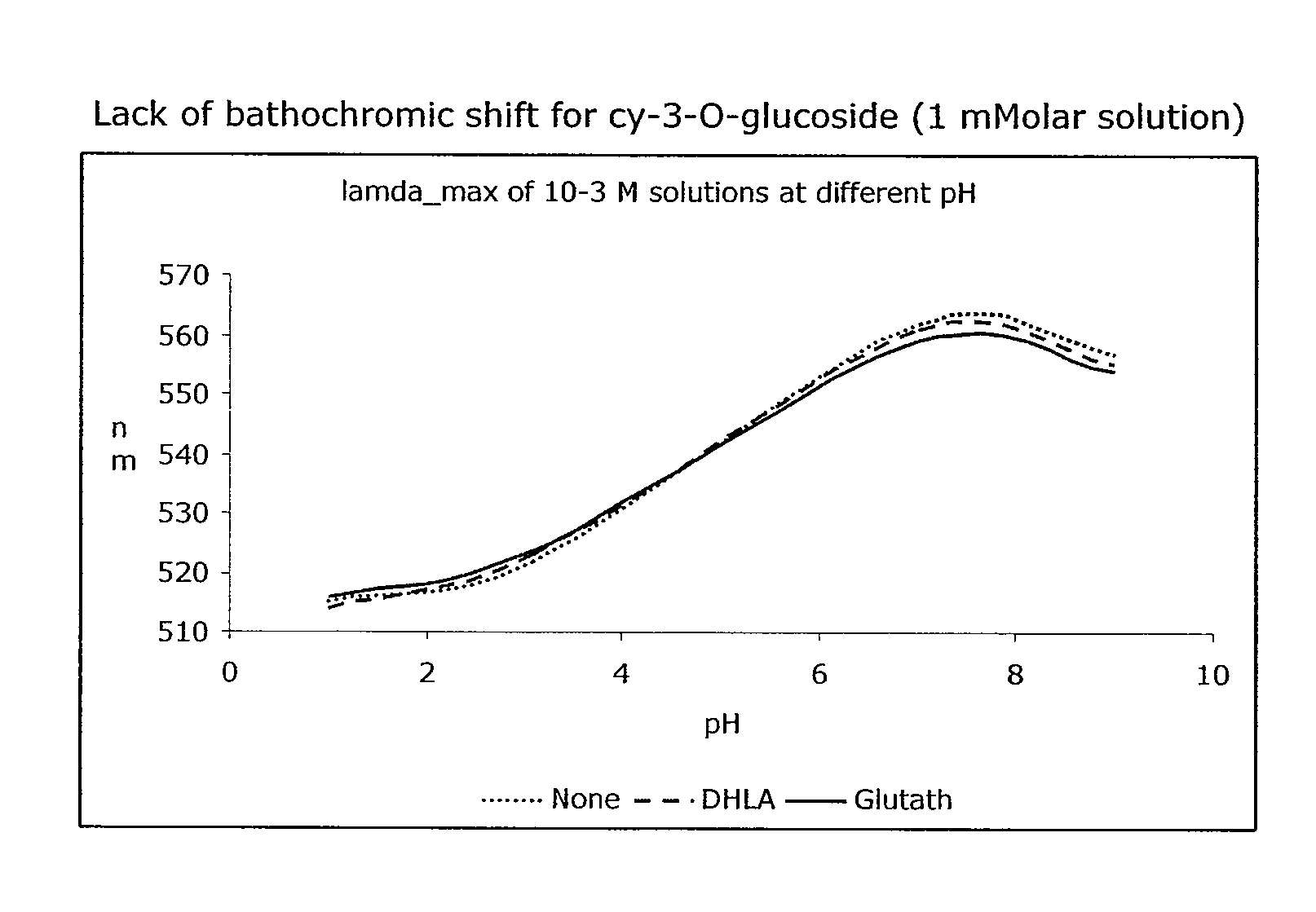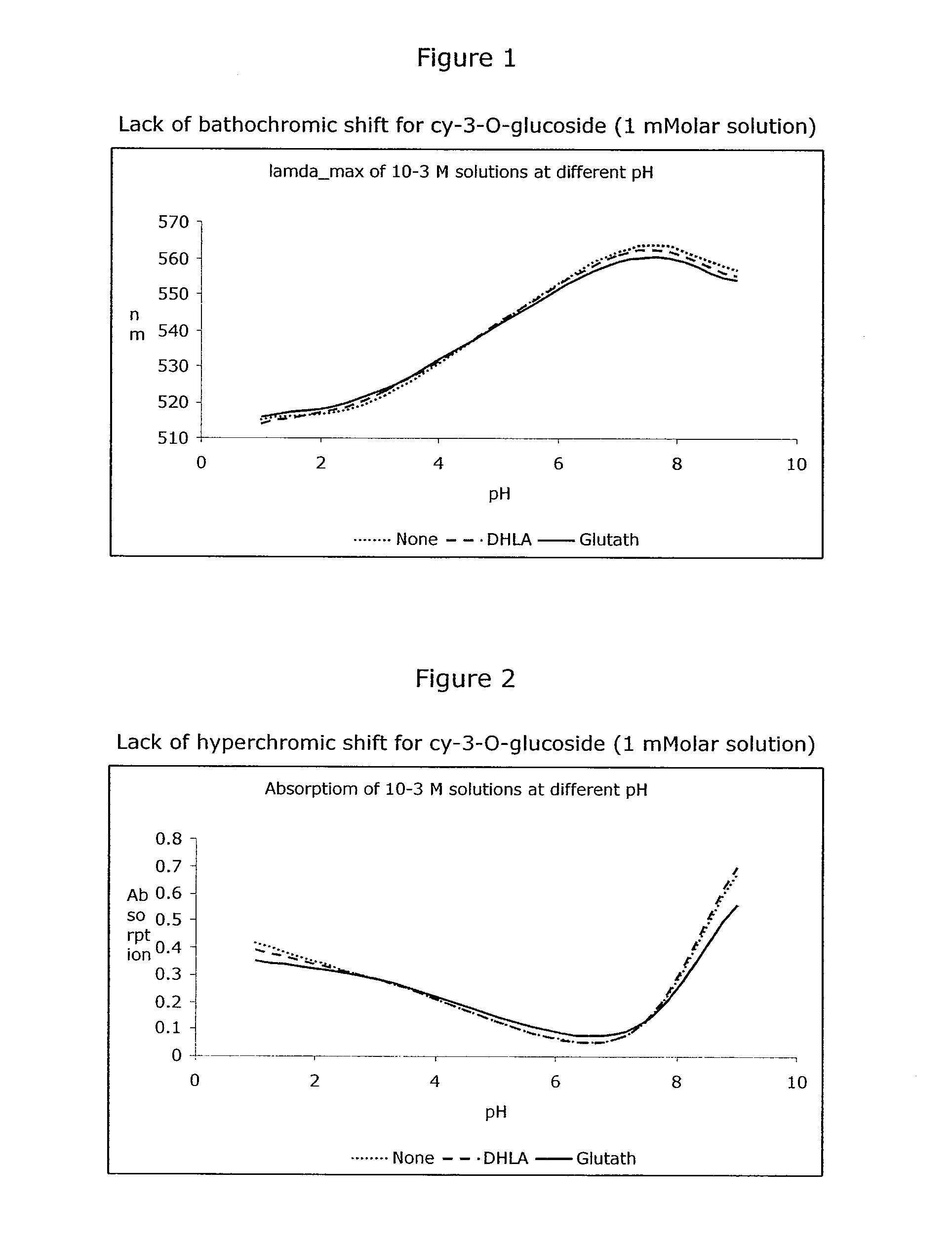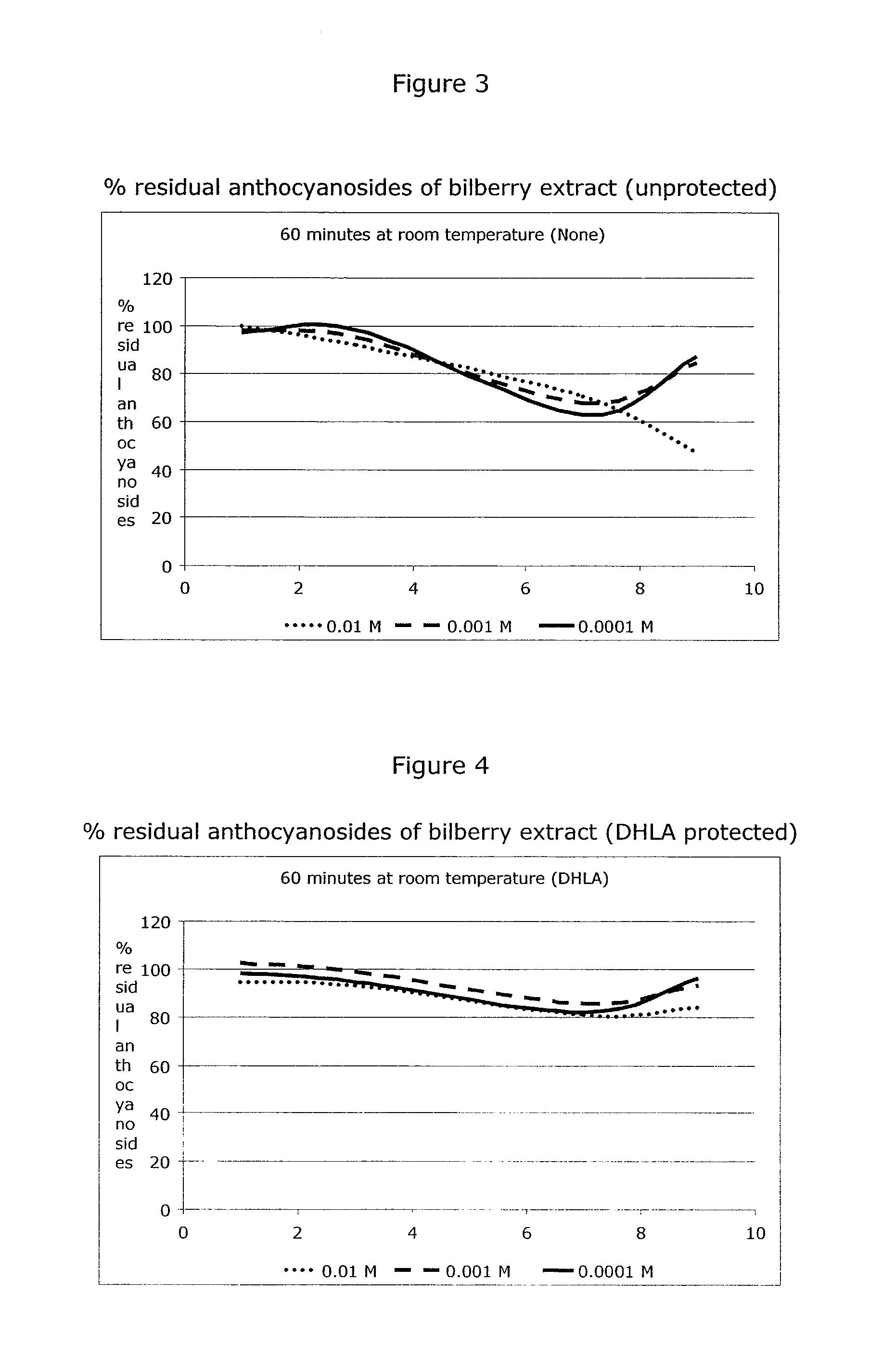Stabilized anthocyanin compositions
a technology of anthocyanin and composition, applied in the direction of biocide, plant ingredients, non-active ingredients of pharmaceuticals, etc., can solve the problem of instability of anthocyanins in solutions having a neutral or basic ph, and achieve the effect of increasing the amount of bioavailable anthocyanin and increasing the delivery of anthocyanin
- Summary
- Abstract
- Description
- Claims
- Application Information
AI Technical Summary
Benefits of technology
Problems solved by technology
Method used
Image
Examples
example 1
[0293]Sample a) 60 mg bilberry extract [37% anthocyanosides] (0.048 mmol anthocyanosides expressed as cyanidin-3-O-glucoside) were added to a 100 ml flask and filled to volume with sodium phosphate buffer (5% [w / w], pH=7.0), and stirred until dissolution was complete. A 1 ml sample was taken immediately and acidified with formic acid to pH=1.0 and analyzed by HPLC for the content of anthocyanosides (Fresh Sample). The remaining solution was kept for 4 hours at 37° C. (water bath) with stirring. Thereafter another sample (Blank sample), representing unprotected degradation, was taken and acidified.
[0294]Sample b) 20 mg reduced L-glutathione (0.065 mmol) were added to a 100 ml flask with 60 ml sodium phosphate buffer (5% [w / w], pH=7.0) and stirred until dissolution was complete. 60 mg bilberry extract [37% anthocyanosides] (0.048 mmol expressed as cyanidin-3-O-glucoside) were then added and the flask was filled to volume with sodium phosphate buffer (5% [w / w], pH=7.0) and kept for 4 h...
example 2
[0299]Sample a) 60 mg bilberry extract [37% anthocyanosides] (0.048 mmol expressed as cyanidin-3-O-glucoside) were added to a 100 ml, filled to volume with sodium phosphate buffer (5% [w / w], pH=7.0) and stirred until dissolution was complete. A 1 ml sample was immediately taken and acidified with formic acid to pH=1.0 and analyzed by HPLC for the content of anthocyanosides. The remaining solution was kept at 37° C. (water bath) with stirring and additional 1 ml samples (Blank Samples), representing unprotected degradation, were sampled every 15 minutes. The samples were analyzed for selected anthocyanosides by HPLC.
[0300]Sample b) 20 mg reduced L-glutathione (0.065 mmol) were added to a 100 ml flask with 60 ml sodium phosphate buffer (5% [w / w], pH=7.0) and stirred until dissolution was complete. 60 mg bilberry extract [37% anthocyanosides] (0.048 mmol expressed as cyanidin-3-O-glucoside) were added and the flask was filled to volume with sodium phosphate buffer (5% [w / w], pH=7.0) an...
example 3
[0302]Sample a) 60 mg black currant extract [35% anthocyanosides] (0.037 mmol anthocyanosides expressed as cyanidin-3-O-rutinoside) were added to a 100 ml flask and filled to volume with sodium phosphate buffer (5% [w / w], pH=7.0) and stirred until dissolution was complete. A 1 ml sample was taken immediately, acidified with formic acid to pH=1.0 and analyzed by HPLC for the content of anthocyanosides (Fresh Sample). The remaining solution was kept for 4 hours at 37° C. (water bath) with stirring. Thereafter samples (Blank sample), representing unprotected degradation, were taken and acidified.
[0303]Sample b) 20 mg reduced L-glutathione (0.065 mmol) were added to a 100 ml flask with 60 ml sodium phosphate buffer (5% [w / w], pH=7.0) and stirred until dissolution was complete. 60 mg black currant extract [35% anthocyanosides] (0.037 mmol anthocyanosides expressed as cyanidin-3-O-rutinoside) were then added and the flask was filled to volume with sodium phosphate buffer (5% [w / w], pH=7.0...
PUM
| Property | Measurement | Unit |
|---|---|---|
| mole ratio | aaaaa | aaaaa |
| pH | aaaaa | aaaaa |
| molar concentration | aaaaa | aaaaa |
Abstract
Description
Claims
Application Information
 Login to View More
Login to View More - R&D
- Intellectual Property
- Life Sciences
- Materials
- Tech Scout
- Unparalleled Data Quality
- Higher Quality Content
- 60% Fewer Hallucinations
Browse by: Latest US Patents, China's latest patents, Technical Efficacy Thesaurus, Application Domain, Technology Topic, Popular Technical Reports.
© 2025 PatSnap. All rights reserved.Legal|Privacy policy|Modern Slavery Act Transparency Statement|Sitemap|About US| Contact US: help@patsnap.com



